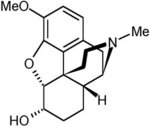You routinely administer combination drugs...but do you know what's in them? To find out, match each combination of ingredients in Section II with its correct name in Section I.
SECTION I
1. Dimetane-DX (A.H. Robins)
2. Neosporin + Pain Relief (Warner-Lambert)
3. GoLYTELY (Braintree)
4. Premphase (Wyeth-Ayerst)
5. DHC Plus (Purdue Frederick)
SECTION II
a. conjugated estrogen, 0.625 mg; medroxyprogesterone acetate, 5 mg The tablets taken on days 1 to 14 in this hormone replacement therapy contain conjugated estrogens. Those taken on days 15 to 28 contain conjugated estrogens and the progestin medroxyprogesterone. Ten your patient she may have menstrual-like bleeding or spotting. b. one 4-liter jug contains polyethylene glycol (PEG) 3350, 236 g; sodium sulfate, 22.74 g; sodium bicarbonate, 6.74 g; sodium chloride, 5.86 g; potassium chloride, 2.97 A Used to clean the bowel for colonoscopy, this solution contains PEG and the electrolytes sodium sulfate, sodium bicar bonate, sodium chloride, and potassium chloride, which induce diarrhea by an osmotic effect. Tell the patient not to eat solids for at least 2 hours before starting the solution. c. each 5 ml contains dextromethorphan hydrobromide, 10 mg; pseudoephedrine hydrochloride, 30 mg; brompheniramine maleate, 2 mg
A health care provider may prescribe this syrup to relieve cold symptoms. Dextromethorphan is a nonopioid cough suppressant; pseudoephedrine, a sympathomimetic, relieves nasal congestion. Brompheniramine, an antihistamine, relieves itchy eyes, nose, and palate. Warn your patient to use caution during activities that require mental alertness.
d. dihydrocodeine bitartrate,16 mg; acetaminophen, 356.4 mg; caffeine, 30 mg Prescribed to manage pain, these capsules contain dihydrocodeine, an opioid analgesic, and acetaminophen, a nonopioid analgesic. Caffeine may enhance their effects: Warn your patient to avoid alcohol while taking this drug. e. bacitracin zinc, 500 units; neomycin, 3.5 mg; polymyxin B sulfate, 10,000 units; pramoxine hydrochloride,10 mg A patient may select this over-the-counter ointment to treat cuts or wounds. Bacitracin, neomycin, and polymyxin B are antibiotics; pramoxine, a topical anesthetic. Tell your patient to keep this ointment away from her eyes.
ANSWERS: 1c, 2e, 3b, 4a, 5d
Copyright Springhouse Corporation Oct 2000
Provided by ProQuest Information and Learning Company. All rights Reserved



